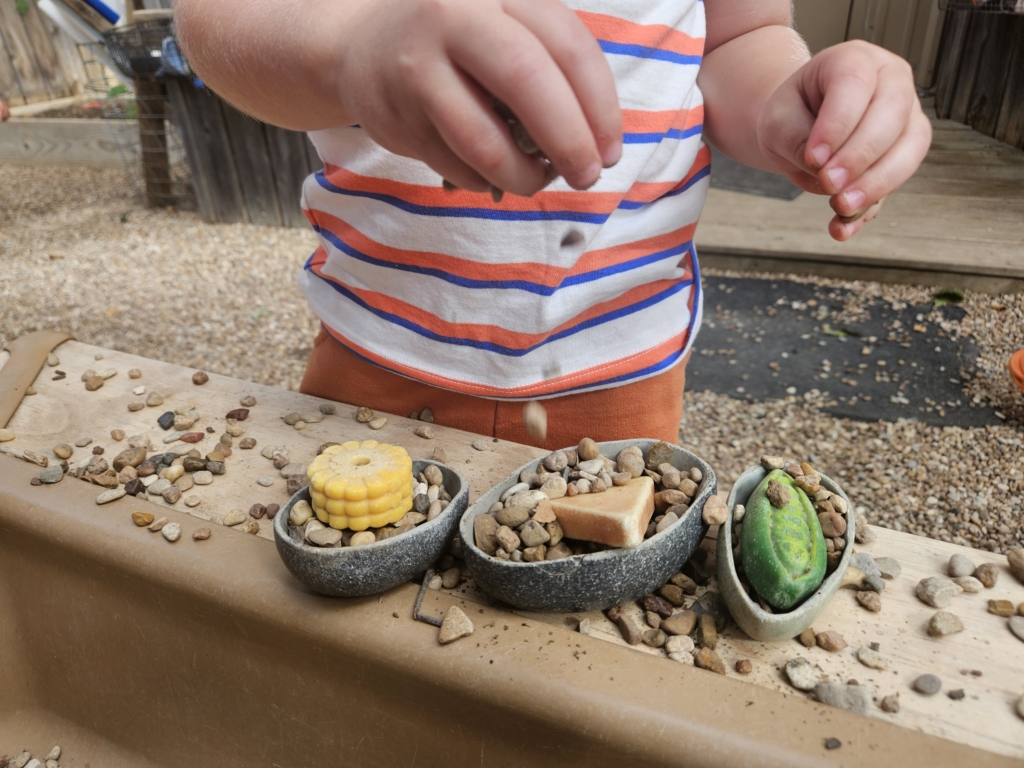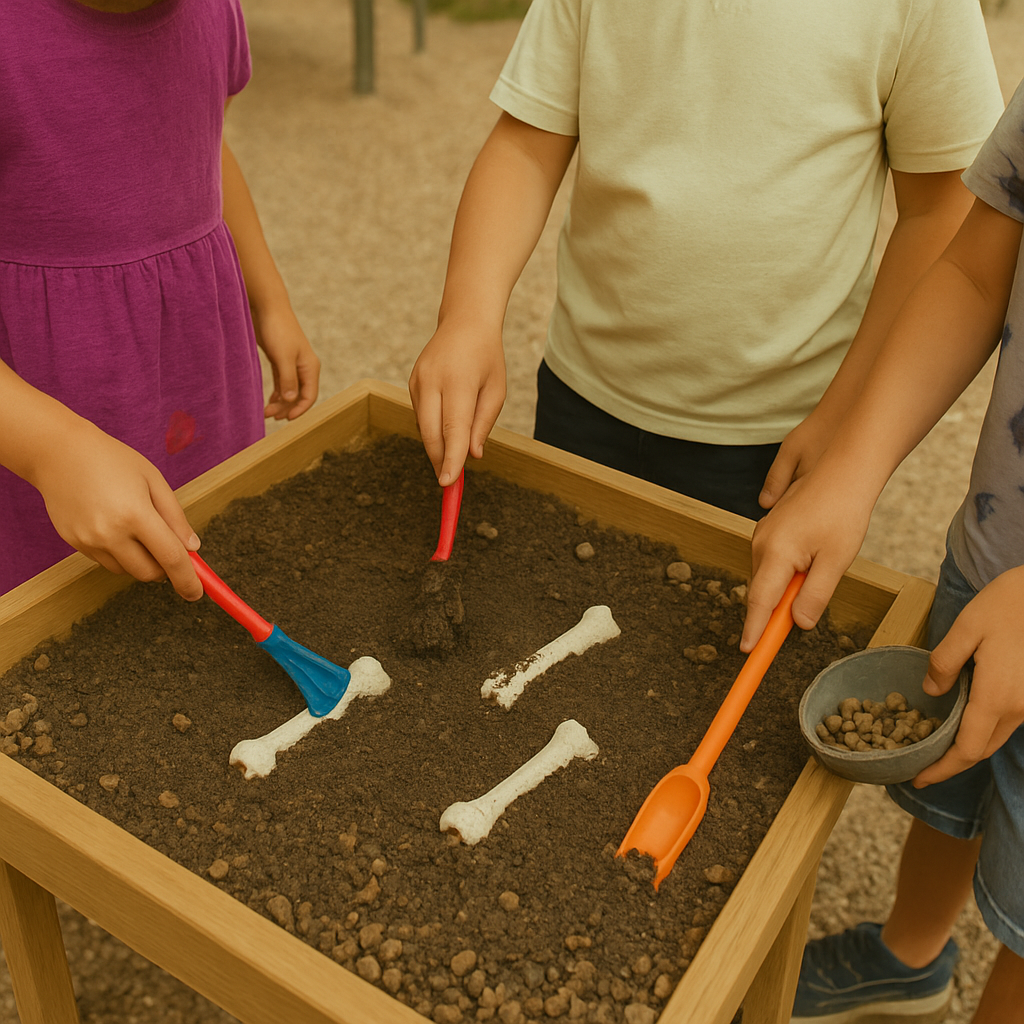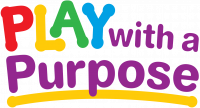When people think of STEM in early childhood, images of coding robots, magnetic tiles, or pulleys often come to mind. But as it turns out, the most powerful STEM experiences for young learners may come from something far simpler—like pretend tacos, dinosaur bones, and what the children at My Time Kids Academy affectionately call “rock food.”
During a recent episode of Child Care Conversations with Kate and Carrie, I had the pleasure of reconnecting with Karly Cummins, director at My Time Kids Academy in Bee Cave, Texas. Her school recently integrated a series of products from Play with a Purpose, and the transformation she described was both delightful and enlightening. She explained how what began as imaginative play—children “cooking” with pretend food—soon turned into deep scientific exploration. “The play started off very typical,” Karly told us. “But then I noticed the kids using the round food pieces on ramps, asking, ‘Does it roll?’ or ‘Does it slide?’ Without any prompting, they just started exploring STEM concepts.”
The materials Karly referred to—Outdoor Sensory Food Stones, the Discovery Bone Set, and Mud Kitchen Accessory Set—are designed with durability and open-ended use in mind. Their quality and texture invite exploration, whether they’re submerged in a water table, buried in a sandbox, or balanced on homemade scales made of wood beams and buckets. Even after months of outdoor use, these pieces hold up under enthusiastic little hands and Texas weather. For children ages two and a half through five, they proved not only fun but developmentally rich.
 Karly described how the dinosaur bones sparked impromptu digs and conversations about paleontology, while the rock food became tools for measuring, comparing, and storytelling. With no scripted activities and no adult-led lessons, children were discovering real science: force and motion, weight and balance, sorting and categorizing. They were practicing math by counting gravel into bowls, experimenting with physics as they rolled food down slides, and engineering their own challenges using natural materials. And through it all, language flourished—words like “avocado,” “scale,” and even “inclined plane” entered the classroom dialogue.
Karly described how the dinosaur bones sparked impromptu digs and conversations about paleontology, while the rock food became tools for measuring, comparing, and storytelling. With no scripted activities and no adult-led lessons, children were discovering real science: force and motion, weight and balance, sorting and categorizing. They were practicing math by counting gravel into bowls, experimenting with physics as they rolled food down slides, and engineering their own challenges using natural materials. And through it all, language flourished—words like “avocado,” “scale,” and even “inclined plane” entered the classroom dialogue.
What made these materials stand out wasn’t just their function—it was their flexibility. Karly emphasized that they were tired of buying what she called “one-hit wonders”—toys that could only be used one way and quickly lost their appeal. Play with a Purpose offered something different. These weren’t just manipulatives. They were invitations. The mud kitchen task cards added structure to the play without limiting creativity, suggesting pretend recipes or activities using leaves, flowers, and play food. And the soon-to-arrive outdoor art boards, with their plexiglass frames, promised new ways to blend observation, art, and science by encouraging children to trace nature or even draw each other’s faces.
Perhaps most powerful was the shift in how learning was shared with families. Karly’s team made a point of using language that reflected the educational value of the play. Instead of saying “the kids played in the mud,” they described it as “investigative science using natural materials and comparative weight analysis.” When a parent hears their three-year-old talk about an inclined plane, it sends a message: this isn’t just play—this is real learning.
In a time when early STEM is often equated with high-tech gadgets and structured kits, it’s refreshing—and important—to remember that children’s natural curiosity thrives in the simplest environments. With thoughtfully chosen tools and room to explore, STEM becomes something every child can access through the language they know best: play.
If you’re looking to bring meaningful, age-appropriate STEM and STEAM learning into your classroom, you don’t have to start with a robot. You might just need a taco, a dinosaur bone, and a little imagination—all thoughtfully designed and brought to life with help from Play with a Purpose.








Leave A Comment